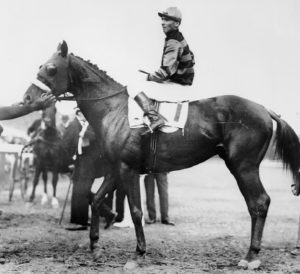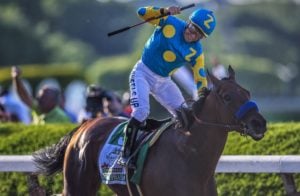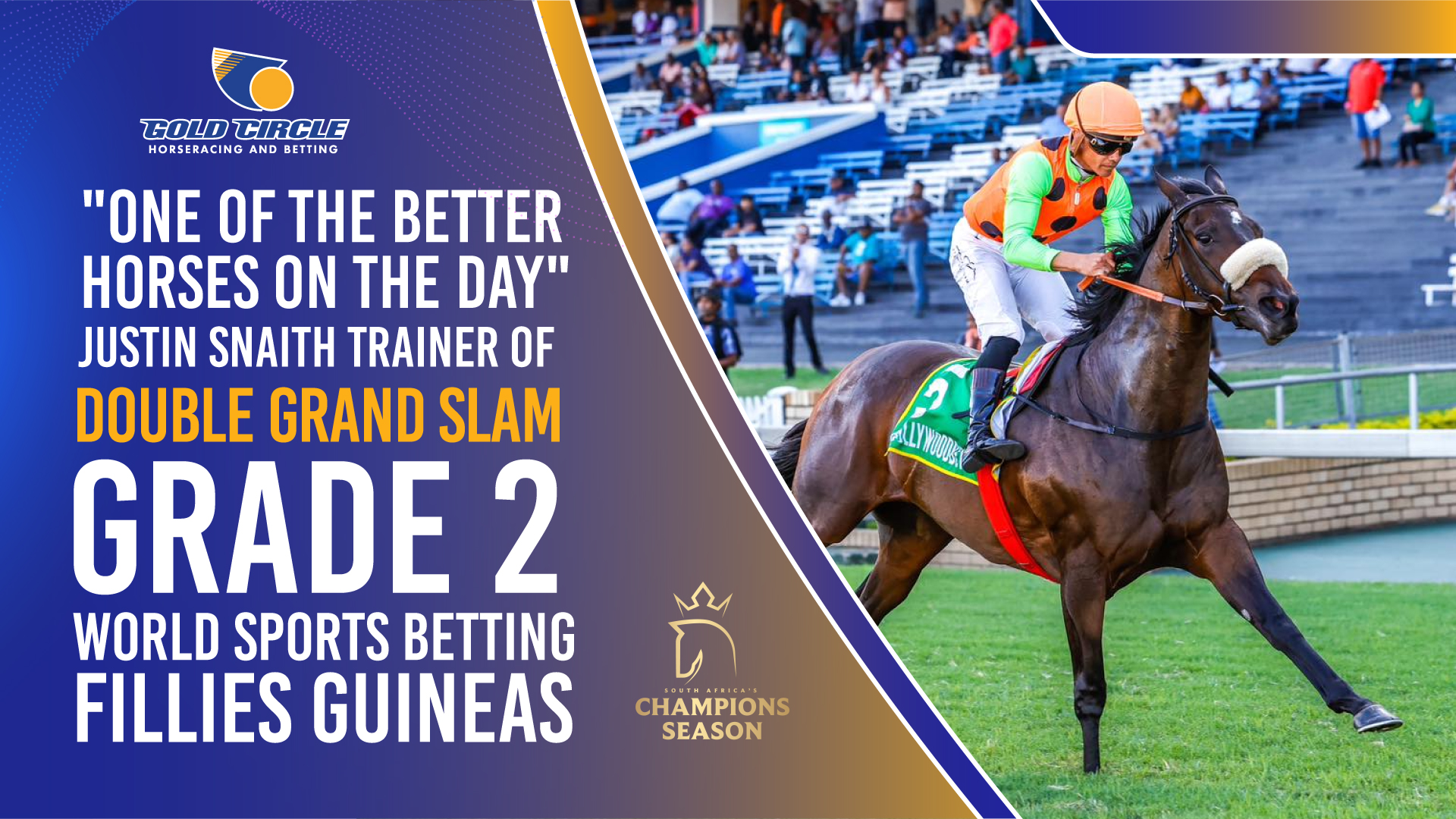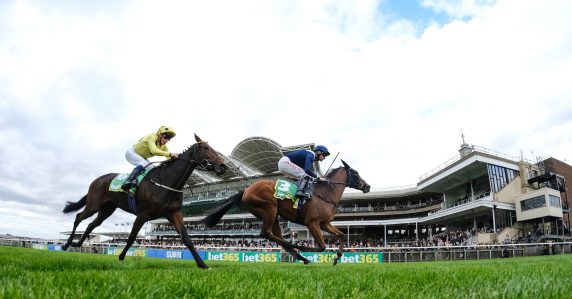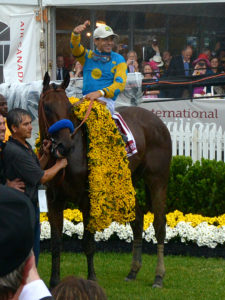 The far turn coming into the stretch is the most dramatic moment of a horse race. It’s where the jockeys ask their horse for whatever they have left, where the horses look for an opening to run through and make their final all-out charge—it’s often where a race is won or lost.
The far turn coming into the stretch is the most dramatic moment of a horse race. It’s where the jockeys ask their horse for whatever they have left, where the horses look for an opening to run through and make their final all-out charge—it’s often where a race is won or lost.
When American Pharoah came around the far turn at Belmont Park on Saturday, with a thousand feet left to go in the Stakes, he had yet to give up the lead in the mile-and-a-half race.
For weeks, the world had been analyzing him for weaknesses.
American Pharoah was making the thirteenth Triple Crown attempt in thirty-seven years—what would be the reason for disappointment this time? Faster horses than American Pharoah had seen lesser ones pass them in Belmont’s agonizingly long stretch; it just didn’t seem possible that this year, this horse, would be any different. But American Pharoah pulled farther and farther away from the pack in the stretch, and the assembled crowd of ninety thousand roared, euphoric.
Over the past year, as American Pharoah racked up wins and Triple Crown chatter grew louder, Ahmed Zayat, the horse’s owner, was often asked what a Triple Crown would mean to him. “Forget about me,” he told the Times Union. “It would mean a lot to the fans, to the whole world.” On Saturday, Zayat continued to frame the milestone as a victory with broader consequences than just for one horse. “This is not about none of us,” he said. This is about American Pharoah and what does this mean for our beautiful sport.”
But what does it mean?
For more than twenty years after the Second World War, horse racing led all American sports in attendance figures. In 1973, the year that Secretariat won the Triple Crown after a twenty-five-year drought, attendance at North American race tracks topped seventy-six million. (By comparison, the combined attendance for American League and National League baseball that year was just over thirty million, a high-water mark for that sport.)
Attendance at race tracks has since plummeted to a small fraction of those numbers. The drop coincided with the Triple Crown drought, and so the answer to many seemed clear: what horse racing needed to return to the glory days of the nineteen-seventies was another hero. It needed the Triple Crown.
As a horse-racing fan, I bought this argument myself. A Triple Crown will save us. It will ignite the sporting public’s curiosity and bring new fans to the race track in droves. “A sport with no stars is no sport at all,” as Zayat is fond of saying, and a Triple Crown winner would be the biggest possible star. But by the time American Pharoah pulled clear of the field and galloped toward the finish line without rival, I realized that this was wishful thinking.
A lot has changed since the last Triple Crown, from Affirmed, in 1978. In the seventies, horse racing revolved around the track: gamblers could bet on races only by being there, and not many races were televised. Naturally, attendance at race tracks was high. But once technology allowed fans to watch and wager from home, they stopped showing up.
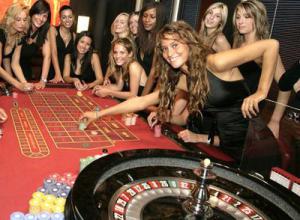 At the same time, the N.B.A. and the N.F.L. were developing into the juggernauts they are today, growing by leaps and bounds during the eighties and nineties, especially among young people. Even the gamblers have more options now, thanks to the growth of legal casinos and the rise of flashier, online options such as poker and fantasy sports. In this changing landscape, horse racing missed out on recruiting the next generation of fans: according to a McKinsey report commissioned by The Jockey Club, the governing body of horse racing, over half of all racing fans started following the sport before 1990, and the number of new fans it gains each year appears to be outpaced by the number of those who die.
At the same time, the N.B.A. and the N.F.L. were developing into the juggernauts they are today, growing by leaps and bounds during the eighties and nineties, especially among young people. Even the gamblers have more options now, thanks to the growth of legal casinos and the rise of flashier, online options such as poker and fantasy sports. In this changing landscape, horse racing missed out on recruiting the next generation of fans: according to a McKinsey report commissioned by The Jockey Club, the governing body of horse racing, over half of all racing fans started following the sport before 1990, and the number of new fans it gains each year appears to be outpaced by the number of those who die.
Some of racing’s popularity problem stems from the sport itself. For potential gamblers, the rules are complicated and the takeout percentages are high. For others, the issue is the nature of the sport itself, and its utilization of animals. Horse racing is a perennial target of PETA and animal-rights activists, whose concerns range from the whipping on the track to the quality of life for the animals off it. And those who are concerned about the quality of the races themselves point to race tracks running too many races with too few horses in each to be competitive. These factors combine to create skepticism among potential new fans of horse racing, and they have taken a toll on the horse-racing faithful as well. According to the McKinsey report, only forty-six per cent of fans would encourage their friends to follow the sport.
Perhaps the end of the Triple Crown drought will inspire some more of racing’s faithful to spread the gospel of their sport again. Because while there is much to be fixed, horse racing has a number of things going for it. The Kentucky Derby is not only a race; it’s an American cultural event, attended by nearly two hundred thousand people every year, watched by tens of millions on television, and celebrated at parties across the country. Like any sport, there’s the workaday schedule of the regular season and then there’s the games in which the title is on the line. Even though attendance at smaller tracks can be thin, on the marquee days, when the best horses are competing, crowds consistently number in the tens of thousands from Miami to Arkansas to Southern California. On Saturday at Belmont, there were thirteen races in total, nine of which were graded stakes races, with full fields of competitive top-quality horses brought to New York from all over the world. The best thing that horse racing has going for it are the horses themselves.
After American Pharoah crossed the finish line in first place, they draped a blanket of carnations over the horse’s neck. As a hotwalker lead the horse around in a circle to cool down, a throng of cameras surrounded him, worrying his handlers. His ears perked, he was calm. He posed. The swell of fans, former President Bill Clinton among them, applauded the horse as he was paraded before them as the twelfth winner of the Triple Crown. Cigars were passed around and lit up. “We did it,” everyone said to one another.
American Pharoah’s Triple Crown was a historic moment, and almost as quickly as it had happened, it was over. While Zayat has promised to continue to race his horse (“We need to enjoy our stars and race them for as long as we possibly could”), American Pharoah’s future is not entirely up to him. Just like the owner of Secretariat did, Zayat sold American Pharoah’s stud rights, to Coolmore Farms, which may be able to command as much as a hundred thousand dollars per foal, making American Pharoah potentially worth tens of millions. The financial promise of a Triple Crown winner is why Secretariat never ran as a four year old, and why American Pharoah likely won’t, either.
But with or without him, horse racing will go on.
Written by David Hill on www.newyorker.com


